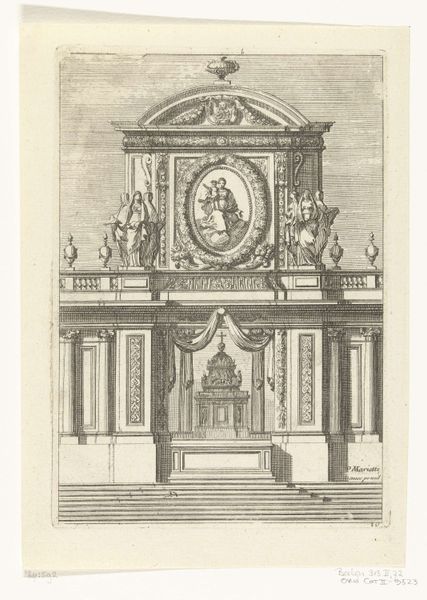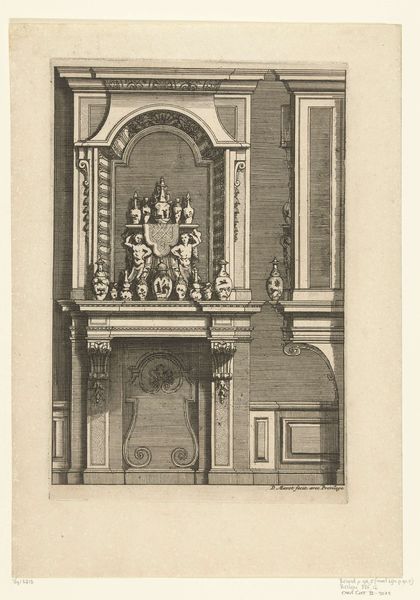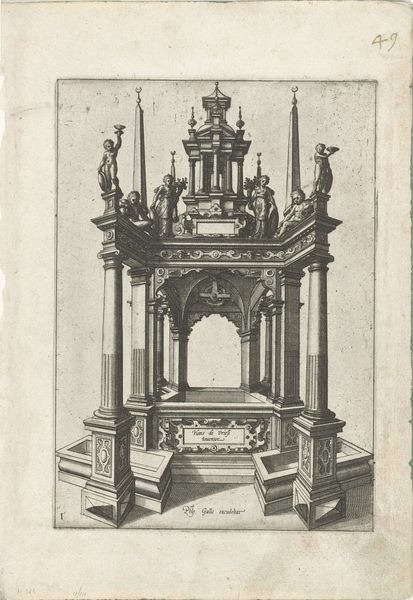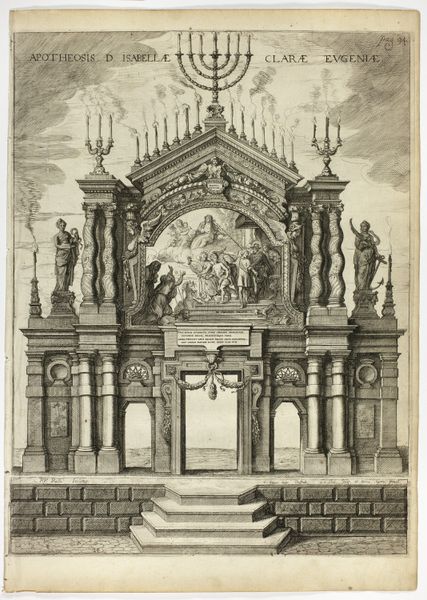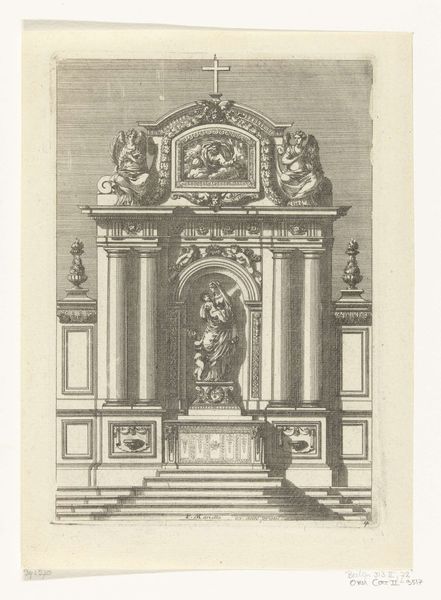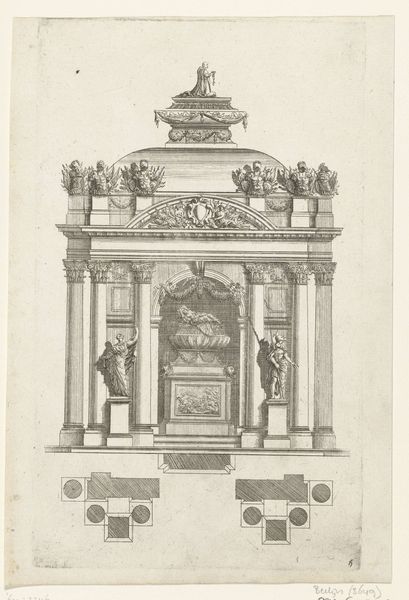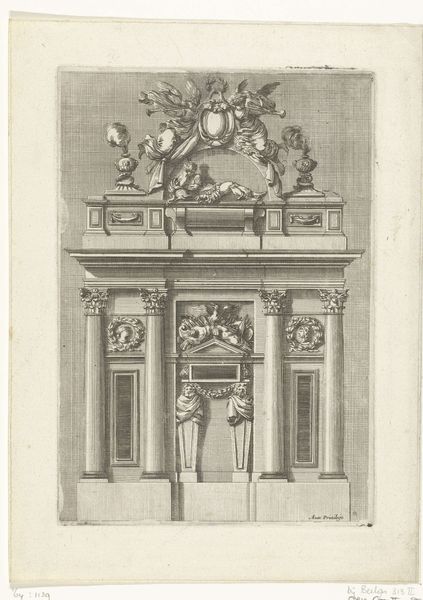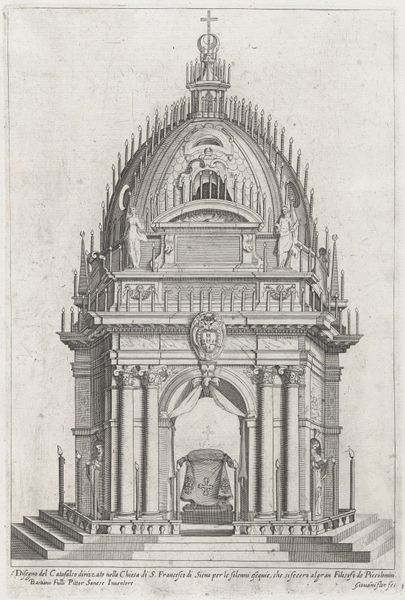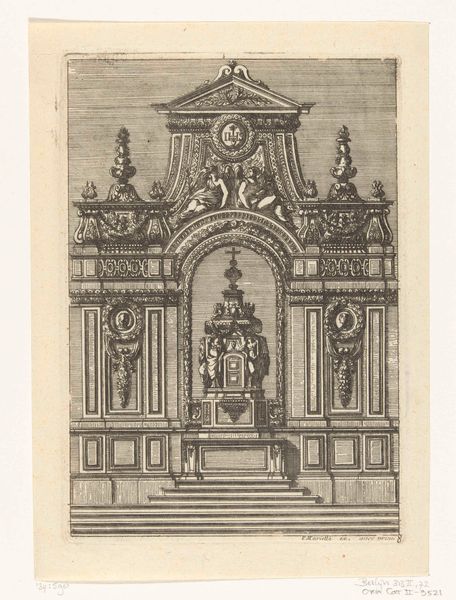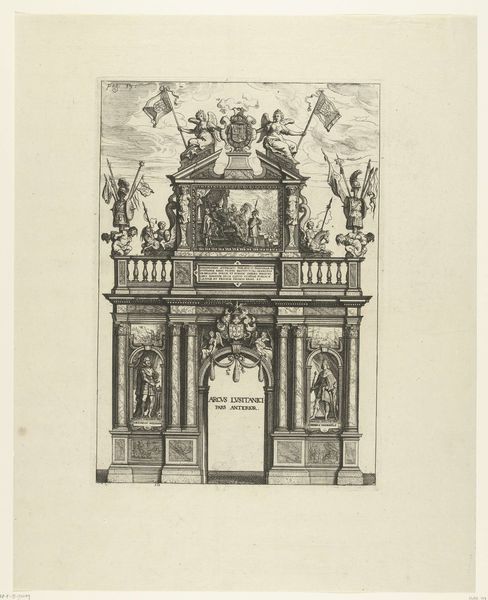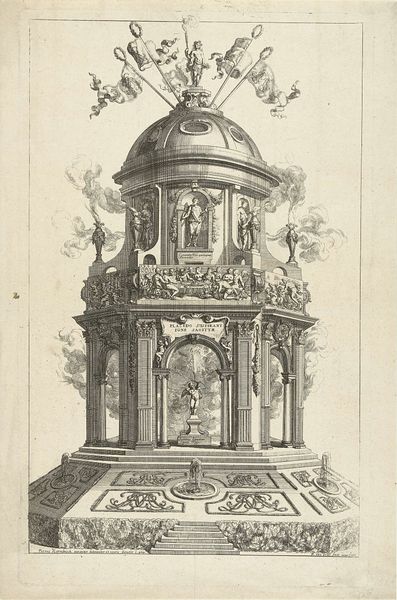
Altaar in de vorm van een tempietto opgericht magistraten op de Meir, 1685 1685
0:00
0:00
gasparbouttats
Rijksmuseum
print, engraving, architecture
#
baroque
# print
#
history-painting
#
engraving
#
architecture
Dimensions: height 170 mm, width 139 mm
Copyright: Rijks Museum: Open Domain
Curator: Here we have Gaspar Bouttats’ engraving, “Altar in the form of a tempietto erected by magistrates on the Meir, 1685,” created in, naturally, 1685. Editor: It's strikingly formal, even severe. The architectural detail is so precise. The stark lines create a sense of rigid order. Curator: That order reflects the societal structure of Antwerp at the time, wouldn't you say? The altar, dedicated by city magistrates, served to reinforce the relationship between religious authority and civic power. The inclusion of "SPQA" probably refers to "Senatus Populusque Antverpiensis," signifying the Senate and People of Antwerp. The labor involved in this detailed engraving, from the artist to the printer, speaks volumes about the value placed on such displays of power. Editor: Absolutely. The conspicuous display of religious iconography, the crucifix at its heart, must be viewed in the context of the Counter-Reformation. Antwerp was, after all, a staunchly Catholic city at this time. So the magistrates are publicly reinforcing not only their civic role but their adherence to a specific religious and political stance. It highlights issues of faith, class and the construction of early modern identity in a fractured Europe. The Baroque exuberance is present but feels restrained and controlled, almost weaponized. Curator: Indeed. Consider the materiality: ink pressed onto paper, mass-produced and distributed to disseminate this message widely. And while the print medium allowed for reproducibility and a wider reach, that doesn't necessarily mean that everyone had access to these kind of prints; it probably hung in the offices of civic institutions. Editor: The image prompts me to question who was really served and protected by this very visual alignment of powers. Were the poor, the marginalized, or those deemed "other" truly represented in this vision of civic order and spiritual devotion? Curator: It certainly wasn't intended for them! It’s all about controlling the narrative by showing material production of the images themselves; printing techniques as well as its Baroque display all demonstrate a material dimension of production. Editor: Agreed. Ultimately, it forces us to look beyond its exquisite details and see the artwork for what it is: a product of its time, steeped in social and religious power dynamics. Curator: A clear view of both technique and historical meaning, yes.
Comments
No comments
Be the first to comment and join the conversation on the ultimate creative platform.
